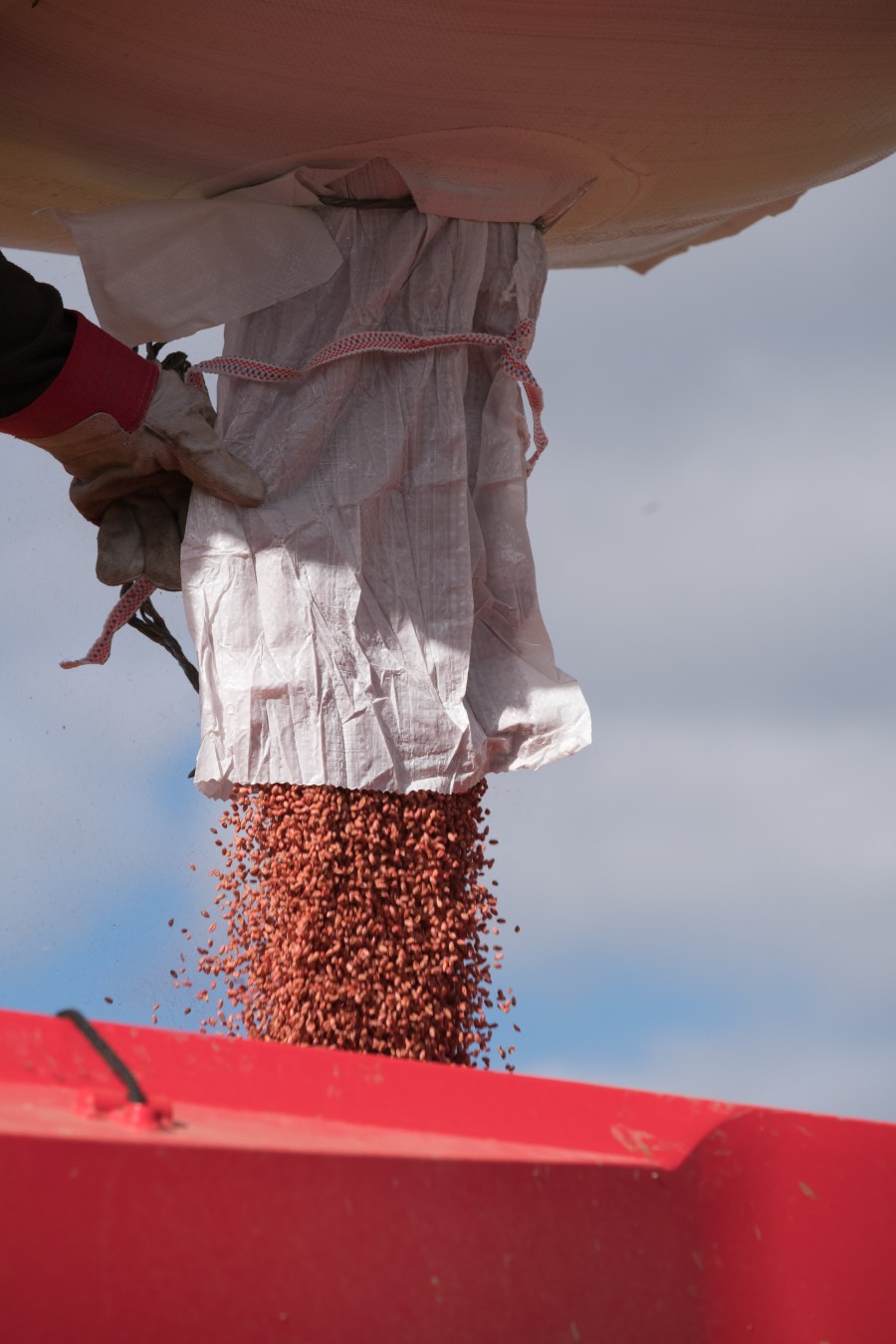Trials with a new seed treatment suggests there’s plenty of potential below the soil surface to improve what a crop does above it. CPM reports.
If you get the crop off to a good start, you’re in a good place.
Tom Allen-Stevens
Growers have a new seed treatment for winter cereals that offers improved performance over existing treatments on major seed and soil-borne pathogens, with a claimed yield advantage over untreated of 0.5t/ha. But the real benefit of Vibrance Duo is enhancement of rooting at establishment, says Syngenta’s Mark Bullen.
“Farmers have been managing the foliar health of their crops for decades – we have a pretty good understanding of that now. It’s time to focus on the root, and Vibrance Duo is part of the journey that will help growers realise the potential of their seed.”
Vibrance Duo combines fludioxonil (as in Beret Gold) with the brand new SDHI sedaxane. This new chemistry has been developed specifically for seed use and is the first SDHI treatment authorised for use on wheat – it’s approved for winter wheat, winter triticale, winter rye and spring oats, with an application pending on spring wheat.
“Some wheat diseases are carried within the seed, while others are soil-borne,” explains Syngenta seedcare technical expert, Michael Tait. “The fludioxonil offers surface protection, while the SDHI brings just enough systemic activity to protect the early stages of seedling growth.”
There’s some mobility, he clarifies, but that’s restricted to the lower part of the plant. “We’ve done quite a bit of work on this to satisfy FRAC guidelines. Sedaxane offers very little foliar disease control. That means it doesn’t influence subsequent SDHI use, so you can still apply two in a foliar spray programme.”
It is highly effective on the complex of seed and soil-borne diseases, however, outperforming industry standards Beret Gold and Redigro Pro (prothioconazole+ tebuconazole), he points out. “It’s quite outstanding on microdochium.”
But perhaps the more interesting aspect of sedaxane is its claimed effect on rooting. In studies carried out on spring wheat in 2014 by Dr Steve Rossal at University of Nottingham, sedaxane increased root and shoot dry weight by a total of around 40% in the absence of any known pathogen.
“The rooting effects were clearest at GS25, but the competitor product tested, prothioconazole, didn’t have the same effect. What’s more, the enhancement of roots did not affect shoots,” reports Michael Tait.
Follow-up studies carried out at Syngenta’s facility at Jealotts Hill, Berks, have confirmed the effects in both spring and winter wheat, with root mass increases found of 49% at GS25.
Across 59 Syngenta trials carried out in N Europe, Vibrance Duo delivered an average yield benefit of 0.563t/ha over untreated seed, and 0.146t/ha over Beret Gold. “So why wouldn’t you use a product with a better effect?” asks Michael Tait.
The effect has also been investigated in split-field trials over eight UK locations in autumn 2015, and then again in small-plot trials last autumn. “We got some excellent data from autumn 2015,” reports Syngenta field technical specialist, Dr Jonathan Ronksley.
“The trials were drilled in Oct in good conditions. There was no difference in the speed of establishment, but by early tillering, a variance was beginning to show.” Dry matter measurements on 23 Dec at Warwick for example showed crop treated with Vibrance Duo had 41% more foliage and a 20% increase in rooting over crop treated with Redigro. This translated into a 0.3t/ha yield benefit.
In 2016, some plots were drilled early and some late. “The early drilled plots are not putting the products under pressure, so there’s not much effect early on. But what we’re finding is that differences do appear by early tillering,” notes Jonathan Ronksley.
“However, if you’re drilling later into tough conditions and the crop is under more pressure – that’s when a crop treated with Vibrance Duo will establish much faster.”
So what’s it actually doing? “We’re still working on the exact mechanism, but work from University of Nottingham suggests certain genes are upregulated or downregulated by the SDHI. The net result is to stimulate root growth.”
The effect is a slightly deeper root, he explains. “It’s not much, amounting to less than 1cm on average. But that gives the young plant access to 104t/ha more soil on average.”
The cost of the treatment will be around about £100/t, or around twice the cost of Beret Gold, coming in at a premium over a standard seed treatment of about £9/ha. Trials results to date, however, suggest that growers can expect a threefold return on investment, says Mark Bullen, “although a good soil structure is still far more important at establishment,” he adds.
“Vibrance Duo won’t make a silk purse out of a sow’s ear. But it does improve plant establishment in the autumn, and if you get the crop off to a good start, you’re in a good place.”
The dry weight difference delivered by Vibrance Duo





